Intro
Boost retail efficiency with 5 tips on inventory management, including stock control, supply chain optimization, and merchandising strategies to minimize waste and maximize profits.
Effective retail inventory management is crucial for the success of any retail business. It involves balancing the need to have enough stock on hand to meet customer demand with the need to avoid overstocking, which can lead to waste and unnecessary expenses. In this article, we will explore five tips for managing retail inventory effectively, helping retailers to optimize their stock levels, reduce costs, and improve customer satisfaction.
Retail inventory management is a complex process that requires careful planning, execution, and monitoring. It involves tracking the quantity of each product in stock, monitoring sales trends, and adjusting inventory levels accordingly. With the right strategies and tools, retailers can streamline their inventory management processes, reduce errors, and make data-driven decisions to drive business growth.
The importance of effective retail inventory management cannot be overstated. When retailers have the right products in stock at the right time, they can meet customer demand, reduce stockouts, and minimize the risk of overstocking. This, in turn, can lead to increased sales, improved customer satisfaction, and enhanced competitiveness in the market. On the other hand, poor inventory management can result in stockouts, overstocking, and waste, ultimately affecting the bottom line of the business.
Understanding Retail Inventory Management
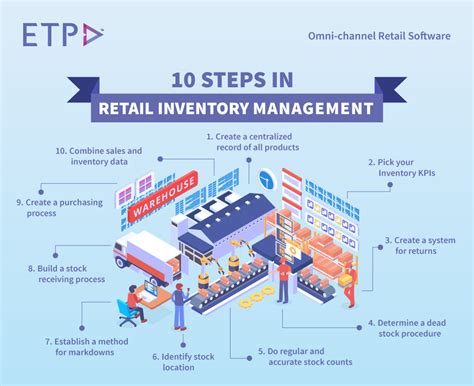
To manage retail inventory effectively, it is essential to understand the basics of inventory management. This includes understanding the different types of inventory, such as raw materials, work-in-progress, and finished goods. Retailers must also be familiar with inventory management techniques, such as just-in-time (JIT) inventory management, economic order quantity (EOQ), and inventory turnover.
Benefits of Effective Retail Inventory Management
Effective retail inventory management offers numerous benefits, including: * Improved customer satisfaction: By having the right products in stock at the right time, retailers can meet customer demand and reduce stockouts. * Reduced costs: Effective inventory management can help retailers avoid overstocking, reduce waste, and minimize the risk of inventory obsolescence. * Increased efficiency: Streamlined inventory management processes can help retailers reduce errors, improve productivity, and make data-driven decisions. * Enhanced competitiveness: By optimizing inventory levels and reducing costs, retailers can improve their competitiveness in the market and stay ahead of the competition.Tip 1: Implement a Inventory Management System
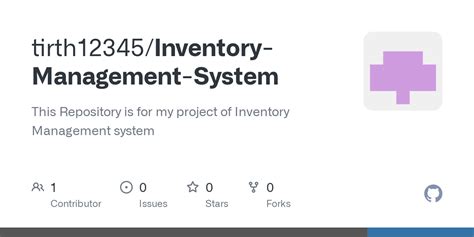
One of the most effective ways to manage retail inventory is to implement an inventory management system. This can be a manual system, such as a spreadsheet, or an automated system, such as an enterprise resource planning (ERP) system. An inventory management system can help retailers track inventory levels, monitor sales trends, and adjust inventory levels accordingly.
When selecting an inventory management system, retailers should consider several factors, including:
- Ease of use: The system should be easy to use and navigate, even for employees who are not tech-savvy.
- Scalability: The system should be able to grow with the business, handling increasing volumes of inventory and sales data.
- Integration: The system should be able to integrate with other business systems, such as point-of-sale (POS) systems and accounting software.
- Reporting: The system should be able to generate reports and analytics, helping retailers make data-driven decisions.
Features of an Inventory Management System
An inventory management system should have several key features, including: * Inventory tracking: The system should be able to track inventory levels, including the quantity of each product in stock. * Sales tracking: The system should be able to track sales data, including the quantity of each product sold. * Automatic ordering: The system should be able to automatically generate orders for inventory replenishment. * Reporting: The system should be able to generate reports and analytics, helping retailers make data-driven decisions.Tip 2: Conduct Regular Inventory Audits
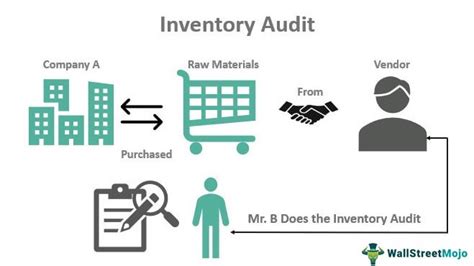
Regular inventory audits are essential for ensuring the accuracy of inventory levels and identifying any discrepancies. During an inventory audit, retailers should count and verify the quantity of each product in stock, comparing it to the inventory levels recorded in the inventory management system.
Inventory audits can help retailers:
- Identify inventory discrepancies: By comparing the physical count of inventory to the recorded levels, retailers can identify any discrepancies and investigate the cause.
- Reduce inventory errors: Regular inventory audits can help retailers reduce inventory errors, such as stockouts and overstocking.
- Improve inventory management: By identifying areas for improvement, retailers can refine their inventory management processes and make data-driven decisions.
Best Practices for Conducting Inventory Audits
When conducting inventory audits, retailers should follow several best practices, including: * Schedule regular audits: Inventory audits should be conducted regularly, such as quarterly or annually. * Use a systematic approach: Retailers should use a systematic approach to counting and verifying inventory, such as counting inventory by category or location. * Investigate discrepancies: Retailers should investigate any discrepancies found during the audit, identifying the cause and taking corrective action.Tip 3: Implement a Just-in-Time (JIT) Inventory Management System
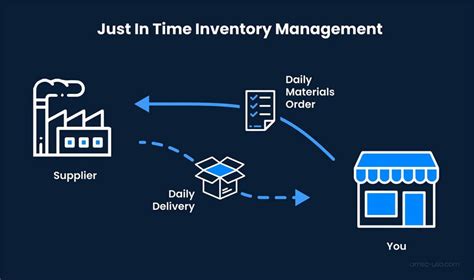
A just-in-time (JIT) inventory management system is a strategy that involves ordering and receiving inventory just in time to meet customer demand. This approach can help retailers reduce inventory levels, minimize waste, and improve cash flow.
When implementing a JIT inventory management system, retailers should consider several factors, including:
- Lead time: The time it takes for inventory to arrive from the supplier.
- Demand variability: The variability in customer demand, which can affect inventory levels.
- Supplier reliability: The reliability of the supplier, which can affect the timely delivery of inventory.
Benefits of JIT Inventory Management
JIT inventory management offers several benefits, including: * Reduced inventory levels: By ordering and receiving inventory just in time, retailers can reduce inventory levels and minimize waste. * Improved cash flow: By reducing inventory levels, retailers can improve cash flow and reduce the risk of inventory obsolescence. * Increased efficiency: JIT inventory management can help retailers streamline their inventory management processes, reducing errors and improving productivity.Tip 4: Use Data Analytics to Optimize Inventory Levels

Data analytics can help retailers optimize inventory levels by providing insights into customer demand, sales trends, and inventory levels. By analyzing data, retailers can identify areas for improvement, refine their inventory management processes, and make data-driven decisions.
When using data analytics to optimize inventory levels, retailers should consider several factors, including:
- Sales data: Sales data can provide insights into customer demand and sales trends.
- Inventory levels: Inventory levels can provide insights into the quantity of each product in stock.
- Seasonal fluctuations: Seasonal fluctuations can affect customer demand and inventory levels.
Best Practices for Using Data Analytics
When using data analytics to optimize inventory levels, retailers should follow several best practices, including: * Use a data-driven approach: Retailers should use a data-driven approach to making decisions, rather than relying on intuition or guesswork. * Analyze sales data: Retailers should analyze sales data to identify trends and patterns in customer demand. * Monitor inventory levels: Retailers should monitor inventory levels to identify areas for improvement and optimize inventory levels.Tip 5: Consider Outsourcing Inventory Management

Outsourcing inventory management can be a viable option for retailers who lack the resources or expertise to manage inventory effectively. By outsourcing inventory management, retailers can leverage the expertise and resources of a third-party provider, improving inventory management and reducing costs.
When considering outsourcing inventory management, retailers should evaluate several factors, including:
- Cost savings: Outsourcing inventory management can help retailers reduce costs and improve efficiency.
- Expertise: Third-party providers can offer expertise and resources that retailers may not have in-house.
- Scalability: Third-party providers can handle increasing volumes of inventory and sales data, scaling with the business.
Benefits of Outsourcing Inventory Management
Outsourcing inventory management offers several benefits, including: * Cost savings: Outsourcing inventory management can help retailers reduce costs and improve efficiency. * Improved expertise: Third-party providers can offer expertise and resources that retailers may not have in-house. * Increased scalability: Third-party providers can handle increasing volumes of inventory and sales data, scaling with the business.Retail Inventory Management Image Gallery
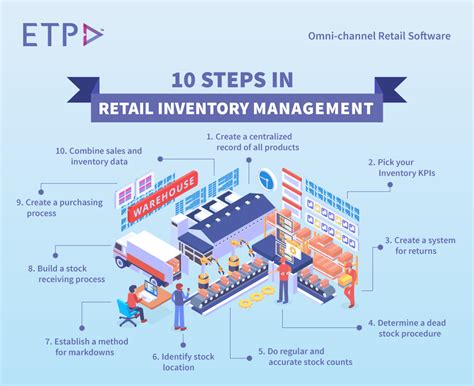

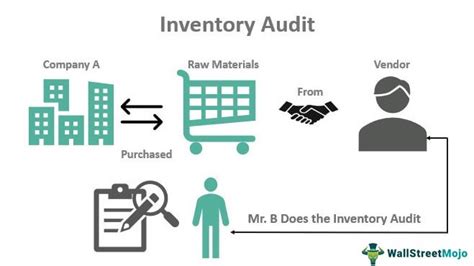
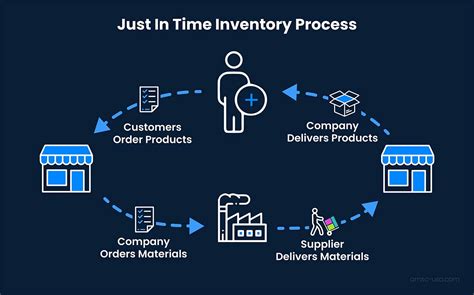



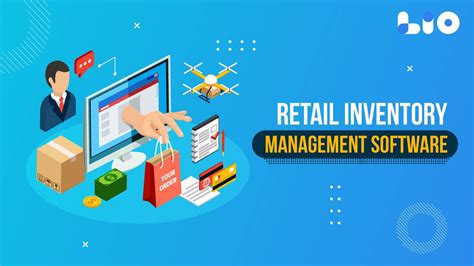
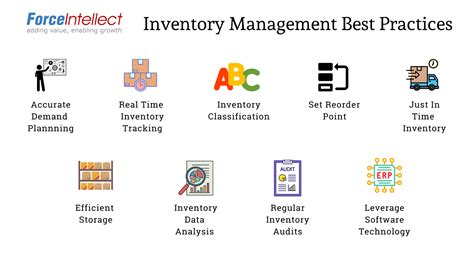

What is retail inventory management?
+Retail inventory management refers to the process of managing and controlling the inventory levels of a retail business, including tracking inventory, monitoring sales trends, and adjusting inventory levels accordingly.
Why is inventory management important for retailers?
+Inventory management is important for retailers because it helps them to optimize inventory levels, reduce costs, and improve customer satisfaction. Effective inventory management can also help retailers to stay competitive in the market and drive business growth.
What are some common inventory management techniques used by retailers?
+Some common inventory management techniques used by retailers include just-in-time (JIT) inventory management, economic order quantity (EOQ), and inventory turnover. Retailers may also use data analytics and inventory management software to optimize inventory levels and improve efficiency.
By following these five tips for managing retail inventory, retailers can optimize their inventory levels, reduce costs, and improve customer satisfaction. Effective inventory management is crucial for the success of any retail business, and by using the right strategies and tools, retailers can stay competitive in the market and drive business growth. We hope this article has provided you with valuable insights and tips for managing your retail inventory. If you have any questions or comments, please feel free to share them below.
